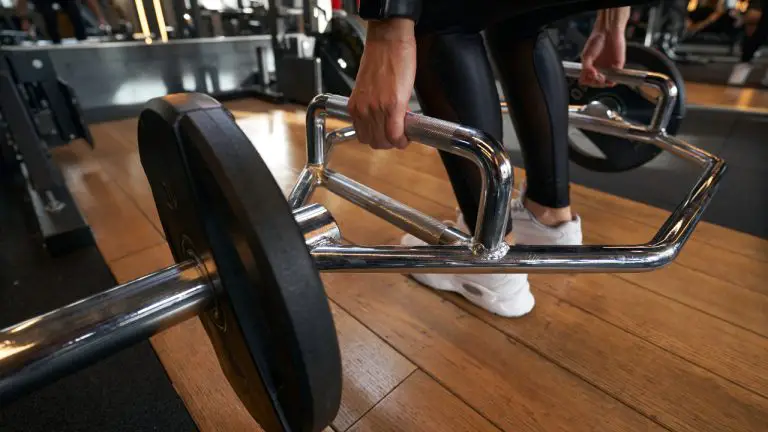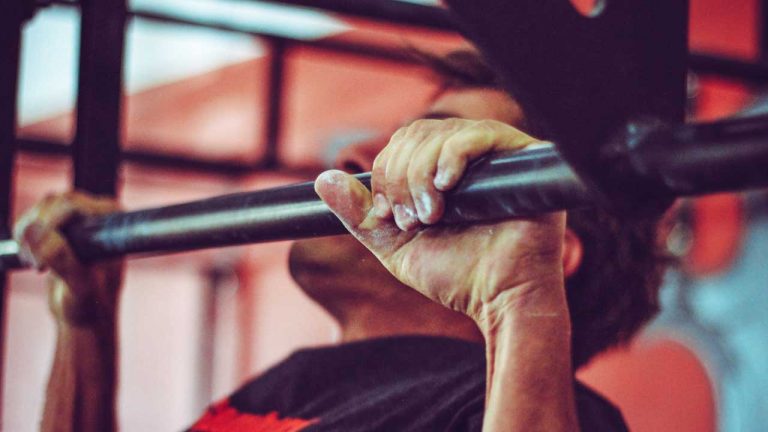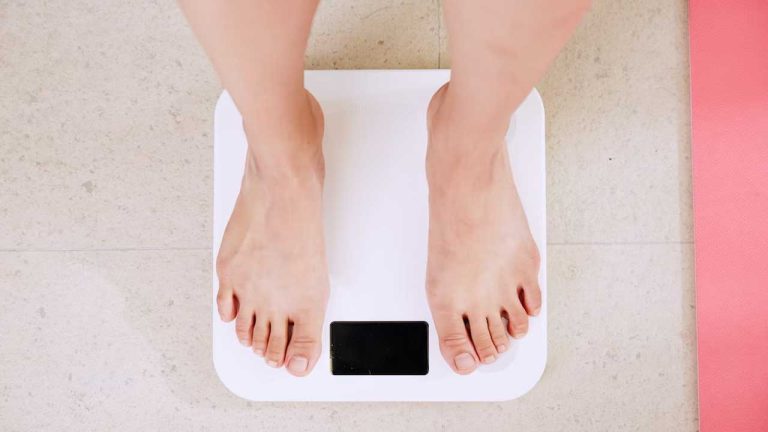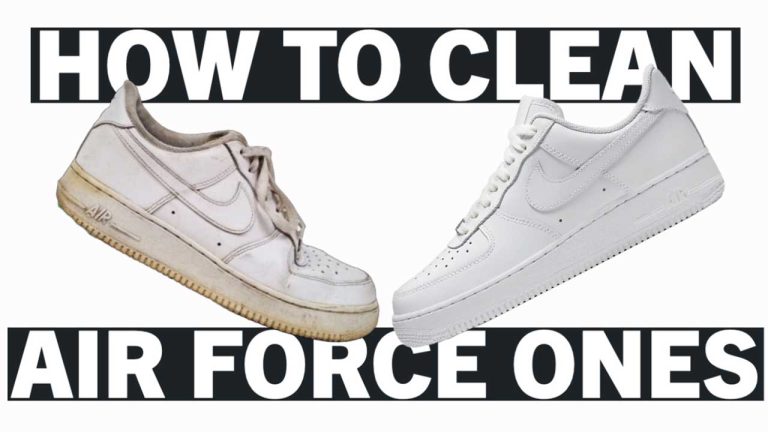Does Matt Stonie Workout? This Is How Competitive Eaters Stay in Shape

ListedFit is reader-supported. When you buy through links on our site, we may earn a small commission.
Despite the dangers associated with competitive eating, many still entertain the idea of joining competitions for fame and fortune.
One of these go-getters is Matt Stonie, one of my favourite YouTubers. He’s a competitive eater with over 15 million subscribers and numerous awards.
I consider Matt Stonie the sole inspiration for many cheat meals I’ve had!
Unlike what other people assume, Stonie doesn’t have superhuman metabolism. He has a lean and fit body as an athlete working hard to follow a particular workout routine and diet.

It’s also critical that he physically and mentally trains to prepare for the Major League Eating season.
Do you want to try competitive eating? Or maybe you just want to eat all you want but still stay in shape? If you’re wondering what Stonie does to keep his form and still do his eating challenges, you can try the Matt Stonie workout.
The routine is done five times a week and combines physical exercises and a strict diet. It also includes six protein shakes with fruits or nuts daily. However, you must consult a professional before changing your current lifestyle and eating habits. There are risks to suddenly altering your diet and exercise.
This article will discuss the Matt Stonie workout and answer the most common questions about competitor eaters.
Contents
How Does Matt Stonie Stay in Shape?
“My regime changes all the time. Sometimes I exercise more, sometimes less,” answered Stonie when GQ asked about his exercise routine. Since his main job is competitive eating, he ensures he constantly takes care of himself, even during off-season periods. Stonie goes to the gym for cardio and weightlifting exercises five times a week and eats a regular diet.
He follows this routine to keep his metabolism active, burn calories, and stay at his weight of 130 lbs. But when preparing for a competition, Stonie’s weekly training consists of eating two large meals with two to three days of rest. Stonie likens his training to bodybuilding, where most bodybuilders hit the gym regularly to build up their muscles and then take a few days off to allow the muscles to rest.
Stonie enters a competition on an empty stomach and bladder but with high energy levels. He does this by downing a gallon of Powerade followed by coffee to avoid fasting and expand and relax his stomach. He also doesn’t forget to drink his nutritional protein shake of the day.
However, like other athletes, his body needs serious recovery. His body usually returns to a normal state on the third day after bloating on the first day and losing a tremendous amount of water weight on the second day.
Here’s the Matt Stonie workout meal plan he follows after every competition:
- For Breakfast: Protein shake and carrots
- For Lunch: Protein shake and apples
- Mid-day Snack: Protein shake and a handful of almonds
- For Dinner: Protein shake and slices of bread
- Before Bed: Casein protein and almonds
Can Competitive Eaters Stay Thin?
Yes, competitive eaters can stay thin. There are various means to remain lean even after eating more than 10,000 calories in one sitting. Most practice controlled eating – they don’t always eat a lot. Some have fast and active metabolisms.
So how do competitive eaters manage to eat such a massive amount of food during competitions? Some starve themselves before the contest, while others forcefully vomit the food afterwards.
Between the events, these dedicated eaters train to eat a lot and continue their active routines to burn calories.
Competitive eaters often prepare their stomachs by training runs and eating their competitors’ foods. This will allow them to calculate the time and find the best strategy to win. This training is partnered with physical exercises to ensure that the body burns all the calories and fat from the food consumed.
Meanwhile, others keep their stomachs stretched by consuming large but low-calorie meals such as salads, fruits, protein foods, and water.
Cardio and weight training are essential because they keep metabolism active. This way, they can maintain weight, make their body healthier, and be better prepared for competitions.
“My regime changes all the time. Sometimes I exercise more, sometimes less,”
Matt Stonie
Do Competitive Eaters Take Laxatives?
Unfortunately, there is no sure answer to this question. Like most people, competitive eaters don’t talk about their bathroom habits. Some participants bravely share that their toilet bowls are always full. They even say that some contents are not fully digested or admit to inducing vomiting, but none directly confess to regularly using laxatives. However, people believe that some competitive eaters use laxatives and purge after the competition.

Food digestion varies depending on factors like gender, age, and health. It usually takes eight hours for food to pass through the intestines and about 36 hours to move to the colon.
By vomiting or using laxatives, eaters avoid the discomfort and risk of competitive eating, such as gastric ruptures, nausea, heartburn, and diarrhoea, forcing them out of their stomachs.
It is important to remember that the type of food and eating habits affect bowel movements. This means that some competitors may not have a problem defecating because their bodies are used to it.
Editor’s Note:
For me, this video of his is the hardest to watch. Mainly because I tried one packet of these Fire Noodles before and they were so hard to eat!
Do Competitive Eaters Get Fat?
Yes, they do. Research suggests that competitive eaters put themselves at a higher risk of obesity due to the number of calories consumed during competition. Let’s take the 2015 Nathan’s Famous contest, where Matt Stonie dethroned Joey Chestnut, as an example. The average calorie intake of a man is 2,000 to 2,500, and the average hot dog has 300 calories. If Stonie ate 62 hot dogs, he consumed 18,600 calories in one sitting.
That number is more than ten times the amount of calories to gain weight. Don Lerman, a competitive eater known for his five-minute record of eating seven sticks of salted butter, gained 100 pounds in six years, is a living example.
These days, proper pre-competition training, regular exercise like lifting and running, and calorie control diets in the off-season help top eaters like Stonie not to overeat and avoid gaining weight. Also, the younger generation of eaters wants to stay thin because of the “belt of fat” theory, where belly fat restricts the stomach’s ability to grow.
Even if it’s a popular competition, this sport is still considered by many as “self-destructive.” The proofs of this are the old cases of former competitive eaters like Dominick “The Doginator” Cardo who suddenly woke up with excessive sweating, stomach, and chest pain. It’s the same for Tim Janus, who says he can’t get satisfied.
Here are the other health problems caused by competitive or speed eating:
- Low sodium levels (may lead to seizures)
- Gastrointestinal problems
- Eating disorders
- Choking
- Diabetes
- Acid reflux disease or GERD
- Inflammatory diseases
Conclusion:
So, is the Matt Stonie workout effective for staying in shape even if you are a big eater? It’s effective if you’re training to be a competitive eater, but it might not be very effective if you just love eating.
In addition to regular exercise and following a proper diet, competitive eaters like Stonie only eat a lot during a competition.
Author
-
Stuart Patrick is a health and fitness lifestyle journalist who writes for ListedFit.com.
“I've spent a lot of time trying to get in shape and change my body and I realised there are so many untruths in the health and fitness industry that can slow down or stop your progress, so I share my knowledge and experience to help others to cut through the BS.”
Latest entries
 NutritionJune 5, 2024Shilajit Products
NutritionJune 5, 2024Shilajit Products FitnessMay 14, 2024Donate Blood
FitnessMay 14, 2024Donate Blood GearApril 6, 2024HOKA Kawana 2 Review – Are These The Best HOKA Gym Shoes?
GearApril 6, 2024HOKA Kawana 2 Review – Are These The Best HOKA Gym Shoes? CrossFitApril 4, 2024How Many Pull-Ups Should I Do Daily? Let’s Figure it Out…
CrossFitApril 4, 2024How Many Pull-Ups Should I Do Daily? Let’s Figure it Out…
Affiliates:
This post may contain affiliate links that at no additional cost to you, the site may earn a small commission. We only recommend products we would use ourselves and all opinions expressed on this site are our own.
General Advice:
The information provided in this article is for general informational purposes only. It is not intended as a substitute for professional advice. Always consult with a qualified healthcare professional before starting any new diet, exercise program, or making changes to your health routine.
Accuracy Advice:
While we strive to provide up-to-date and accurate information, the content in this article may not reflect the most current research or medical guidelines. We encourage readers to do further research and consult with professionals for more personalized advice.
Our Recommendations:
The products and services mentioned in any of our articles are recommended based on our independent research and personal experience. We are not sponsored by any company. We aim to suggest products and services we believe are of high quality and could be beneficial to our readers.






